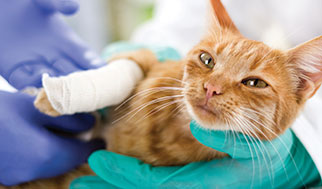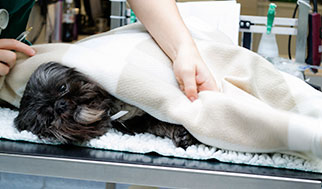Surgical Care
It is always scary to face the idea of your fur-friend needing to go under anaesthesia for a procedure.
But sometimes, that is the only or best option to ensure the health and long life of your friend.


So what do we at King’s Ridge Vet Clinic do to ensure the procedure is as safe and comfortable as possible?
Pain management:
- Local anaesthesia (“freezing”) is helpful even when a patient is under anaesthesia. Even if the brain is not perceiving pain, the body still does – the pain nerves fire up in the presence of a painful stimulus, and start sending their signals. These geared up nerves are ready and waiting when a patient wakes up. If we use local anaesthesia, we avoid the “ramp up” of the pain nerves.
- Balanced use of pain medications, before, during and after the procedure.
IV fluids:
- To prevent a drop in blood pressure, keeping the heart stable and maintaining the filter units of the kidneys.
- To provide emergency access to a vein if rescue drugs are needed for any reason.
- To help “wash out” the anaesthetic drugs from the body more quickly.
- To ensure the patient wakes up well-hydrated, and thus feeling well.
Warming – We use a circulating warm air device (Bair) and warming discs to prevent a drop in body temperature, and monitor body temperature with a real-time probe. Keeping the body warm:
- Keeps body parameters such as heartbeat, blood pressure and breathing more stable under anaesthesia
- Helps the body metabolize and clear the anaesthetic drugs more quickly
- Experiments have also demonstrated that pain perception is worsened if the body temperature is cool
Multi-parameter monitoring – our Surgivet Monitoring device gives us a read-out of:
- ECG – the electrical rhythm of the heart
- Pulse oximetry – the level of oxygen in the blood
- Capnography – how much carbon dioxide is in the air that is breathed out
- Blood pressure
- Core (rectal) temperature
Your pet’s safety, comfort and health are priority!

